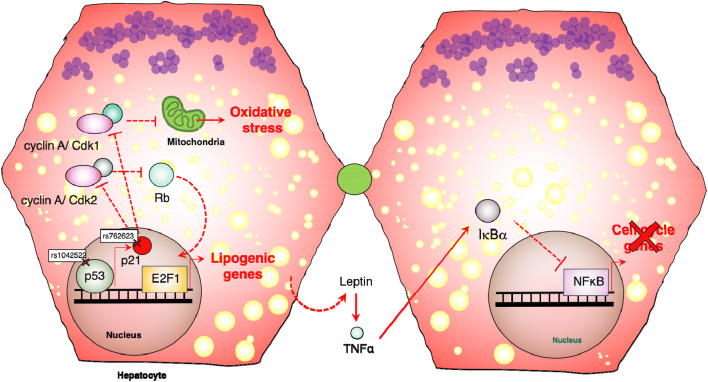Fig. 5.
Bidirectional regulation of cell cycle and metabolism in NAFLD. Development of NAFLD depends on daily habits, diabetes, obesity, genetic predispositions and/or other cooperating factors. Recently, a common SNP in p53 in NAFLD patients hinted that hyperactivation of this transcription factor may promote fatty liver disease. The proposed involves increases in the expression of p21. Alternatively, other SNPs have been found in p21 that lead to its overexpression in NAFLD. Importantly, p21 may predispose to steatohepatitis by two mechanisms that may or may not work together. Initially, by increasing phosphorylation of the retinoblastoma protein (RB), it may promote constant activation of the transcription factor E2F1 leading to increase in lipogenesis. Similarly, blocking functions of CDK1 may lead to increases in oxidative stress which promotes NAFLD due to chronic damage

